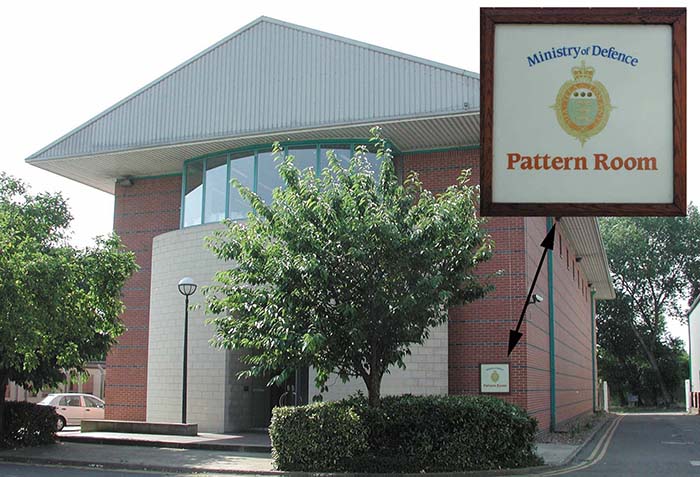The Pattern Room at Nottingham- the outer view was forbidden to take pictures of- if a camera came out, the RO Security staff would see it on the security cameras and come to confiscate the film. As the facility was closing, they allowed this picture to be taken.
by Dan Shea
The Pattern Room has undergone a variety of forms, mostly related to what British agency they were governed by. The Pattern Room at Enfield Lock was technically called the DGDQA Pattern Room, for the managing group at the time; the Directorate General of Defence Quality Assurance for the Master General of Ordnance. The collection is also referred to by some as the R.S.A.F. Pattern Room Collection, for the Royal Small Arms Factory at Enfield. The Pattern Room was moved in the mid Nineteen Eighties to Nottingham. In Nottingham and presently at Leeds, the collection is referred to as the M.O.D. Pattern Room, for the British Ministry of Defence.
The Pattern Room itself has undergone metamorphosis many times over the years, and the roots of the collection stretch back into the Sixteen Hundreds. SAR has covered this history extensively in the past (Volume 1 Number 6 by Virginia Ezell). When Britain would call for arms, a Sealed Pattern was finalized of each weapon or accessory. These “Patterns” were referred to by all manufacturers and craftsmen, as the original to work from. It was in the Nineteenth century that the collection was moved to the R.S.A.F. Enfield facility, after a fire at the Tower of London- the previous repository of the Patterns. The Tower still has an amazing collection of arms, and wonderful displays, but that is the subject for another time.
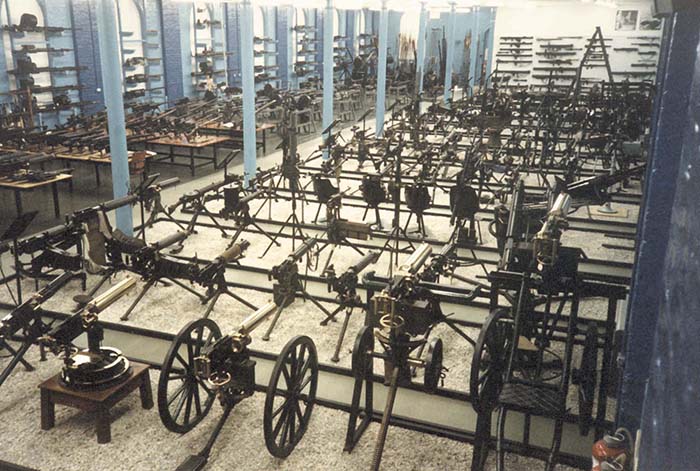
In other parts of this article, there are descriptions of the work that Herb Woodend did to build the Pattern Room into what it was at the time of the closing of the Nottingham facility. At the end of this article, we describe where it has gone from there- the Pattern Room is most decidedly not gone, it is still an active, living collection.
The basic structure of the MOD Pattern Room was a two story building, with the lower section housing firearms over one half inch, or tripod mounted pieces. All of the wheeled Gatlings, Maxims, etc were there, as were the fifty calibers, 20mm and higher guns. Walls with shoulder fired rocket launchers and grenade launchers sat above the small mortar section.
At the closing of the Nottingham facility, anything over one half inch, other than the shoulder fired units and small mortars, was sent to the Royal Armouries facility at Fort Nelson in the South. Fort Nelson is the cannon museum, and they have a new section designed to showcase the Pattern Room additions. If you want to examine Polstens, Oerlikons, Vulcans, etc, then it is to the South you must travel, and, interspersed with a wide variety of early breech loaders you will find these gems. Fort Nelson boasts one of the world’s largest mortars, as well as a cannon from the Fourteen Hundreds. A fascinating collection on its own, the addition of the Pattern Room pieces has rounded out the upper displays. It is hoped that many of these items will return home to the MOD Pattern Room at Leeds in the future, but for now, they are in good hands.
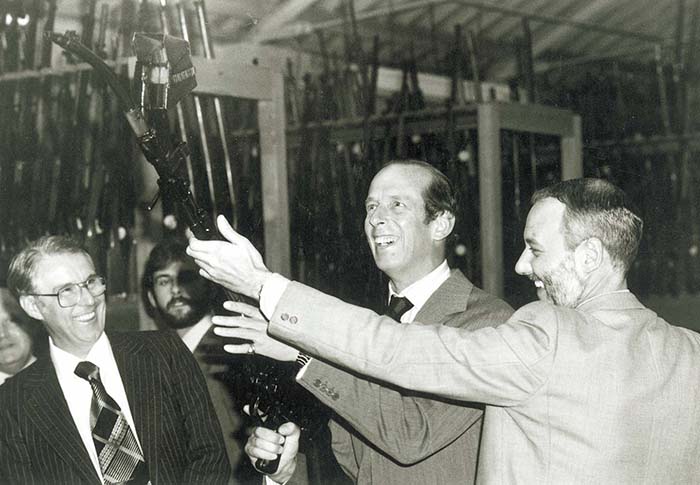
On the upper floor of the Nottingham facility, there were three basic rooms. First, to the right, was the library, where an incredible amount of information and documentation was cataloged and stored. Every modern book on firearms was fair game to be collected and the library itself included thousands of pieces from the procurement and testing of firearms over the last few centuries. Then, the main area had one side as tables with bipod mounted light machine guns, and on the right side, approximately three thousand rifles in racks. Walking down the racks, one might find a rare seventeenth century Pattern rifle, then, the original Delisle suppressed rifles, onward to the entire FAL series, and the SA80 program in full.
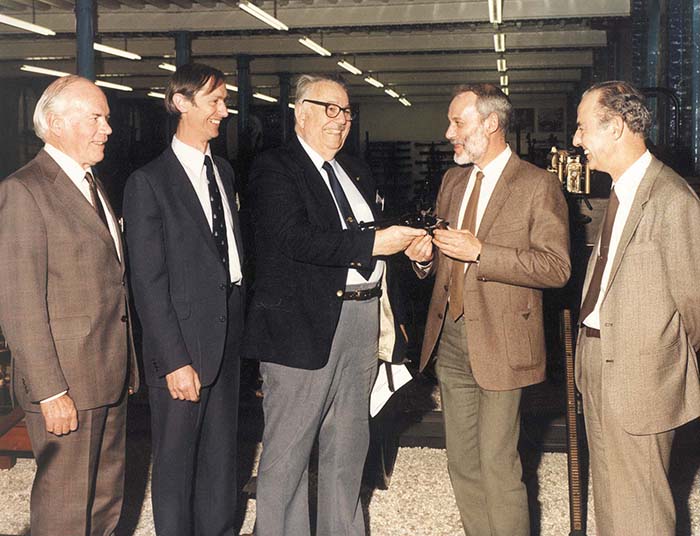
Further back, the “Pistol Room” was actually pistols and submachine guns. From the Villar Perosa onward, the Pattern Room was one of the most complete collections ever assembled regarding modern small arms.
The MOD Pattern Room was professionally packed and shipped in full to the facility in Leeds. The building was demolished almost immediately thereafter, and the rubble cleared along with the memories. The rumor is that the area will be paved and a Sainsbury’s SuperStore will be on the location, thus, they paved paradise, and put in a parking lot. – Dan
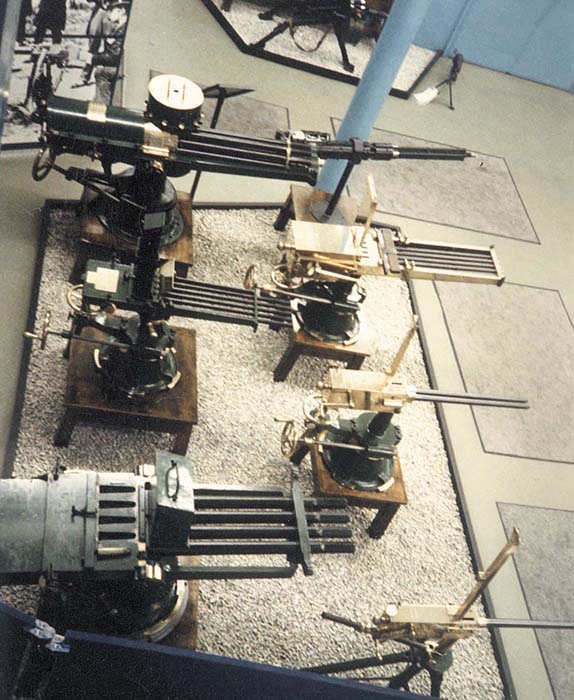
The Pattern Room at Nottingham
Many, many people have wanted to visit the Pattern Room but were unable to do so. For Americans, it was a long, expensive journey, and where does one start to get an invitation, anyway? Those who made the trip and had the connections have many fond memories, and it is a subject that will always come up for those who had been there.

So many of our readers have expressed an interest in the Pattern Room, that now that it is gone and security requirements have been relaxed regarding the old site, we decided to bring you on a “Walking Tour”. Security regulations were always high there, so special permission was sought to do this type of photography, and in the closing days, it was granted. Herewith is our effort to memorialize the experience for all of our readers
The Walking Tour: (Photos by Dan Shea, courtesy MOD Pattern Room)
Herbert J. Woodend, MBE died on 29 July, 2003.
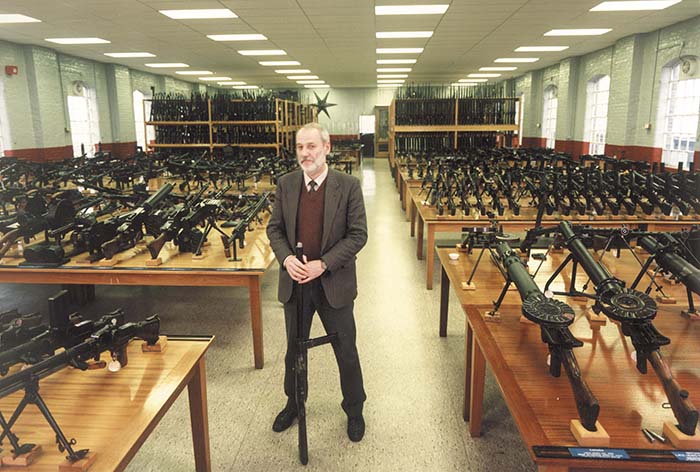
Herb, “The HERB”, or Herbie, as he was known to all his friends, had fought a 12 month battle against cancer. For the last 30 or so years, Herb had been the Custodian of the Pattern Room at Enfield, and latterly of the Ministry of Defence Pattern Room at Nottingham. Herb retired in 2002 after it had been decided to move the collection to the Royal Armouries in Leeds. Herb had re-created the Pattern Room from a collection of small British-only items, to weapons, ancillary equipment, manuals, and books of all countries. It has now become renowned for being the best and most comprehensive small arms collection in the world. It was for this utter dedication that he was awarded the MBE and it was presented to him by the Queen in 1995. Other official recognition came as the Freedom of the City of London; Election to the Worshipful Company of Gunmakers in 1999. Herb was made an Honorary member and Vice President of the Historical Breechloading Small Arms Association in 2000 ,and then awarded a Medal of the Arms and Armour Society.
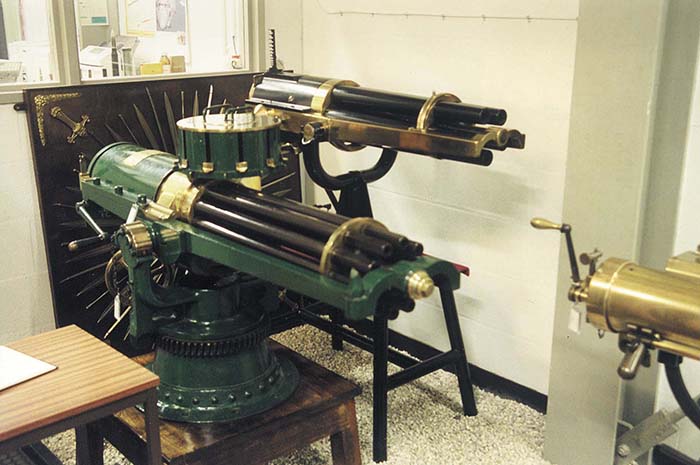
Herb, to all those who knew him, was a complex person. He was generous, sly, devious, fastidious, paranoid, cantankerous, loveable, witty and fun to be with. He was always late, with no sense of time or urgency for planes or ferries, much to the exasperation of those who he was with. He was a very private person who shunned publicity but loved his daughters and family.
He was born in Northern Ireland at Kilrea, Londonderry on 28 April, 1943. He was educated locally at Coleraine Academy. His father Bertie and Uncle Tommy had the local garage, but it was Tommy that started “the HERB” going. Tommy repaired guns as a side line, so Herb was taught to repair and to shoot guns. Herb was a quick learner, and spent his early days sketching detailed drawings of odd guns, initiating the collecting bug. Very soon the house started to fill with guns, cartridges, and militaria. As he grew up, his desire became to work with guns and definitely not in the family garage. So in 1963 he came over to London to attain his dream, with his then girlfriend Evelyn. They married in August of 1964, but sadly divorced 20 years later.
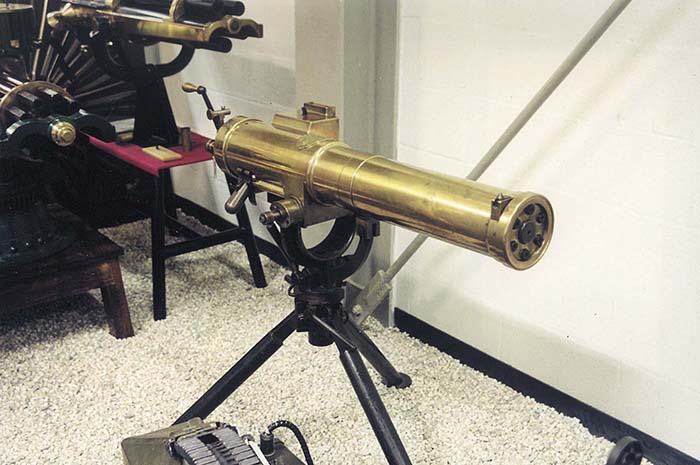
One of Herbs first ports of call in London was to the Royal Small Arms Factory at Enfield, and then onward to the Imperial War Museum to try to find a job. As there were no immediate vacancies, he worked in garages to make ends meet. He visited the R.S.A.F. regularly, to remind them that they needed to employ him. Eventually in 1964 they offered him a job in the office– a starter. That led to the post of Assistant to the Custodian of the Pattern Room. Herb’s regular badgering of people got results. In 1967 Herb took over the job as Custodian of the Pattern Room. As the Custodian/Curator Herb was outstanding. He gathered together all the arms that were in the early collection- but had been dispersed due to wartime conditions. He actively sourced more articles with the limited funds that were made available to him. Weapons were gathered from all over the world, out of other museums, private collections, from dealers, friends, and police amnesties. Over time he transformed it into a collection that comprehensively covered the world’s production of military and civilian small arms and machine guns spanning the last 150 years or so. The Pattern Room stock was available for military weapon designers, police, forensic science services, researchers and historians alike. Herb also had a vast knowledge on all the accessories that were necessary to service the weapons, ancillary equipment, sights, mounts, feed systems, belts, manuals and the cartridges; their loads and uses.
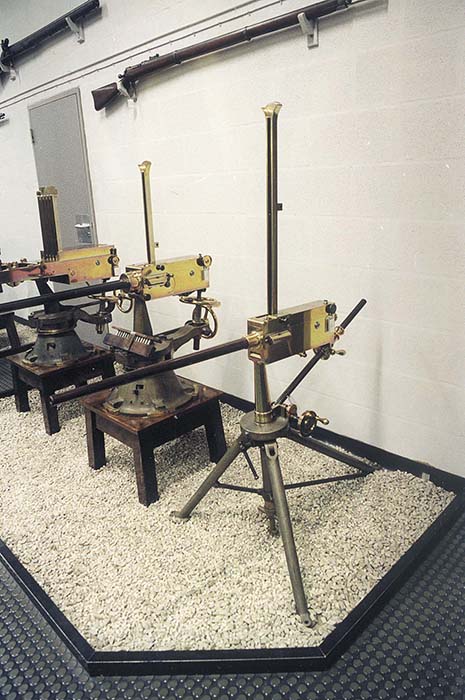
Herb also worked to build the library collection, amounting to tens of thousands of documents, manuals and books. It has now received recognition as a National Archive. There are very few new books on arms and ammunition published over the last twenty years that have not had grateful acknowledgements to the R.S.A.F Pattern Room and Herb Woodend. Many would not have been written but for his accurate research and documentation.
During the various amnesties on firearms in the UK, Herb was reticent about advising other museums on scarcity and rarity values, in order to ensure that the Pattern Room ended up with the “goodies”, thereby increasing the R.S.A.F. collection. He would then later take great delight in ensuring that “the opposition” knew what they had missed out on to the Pattern Room.
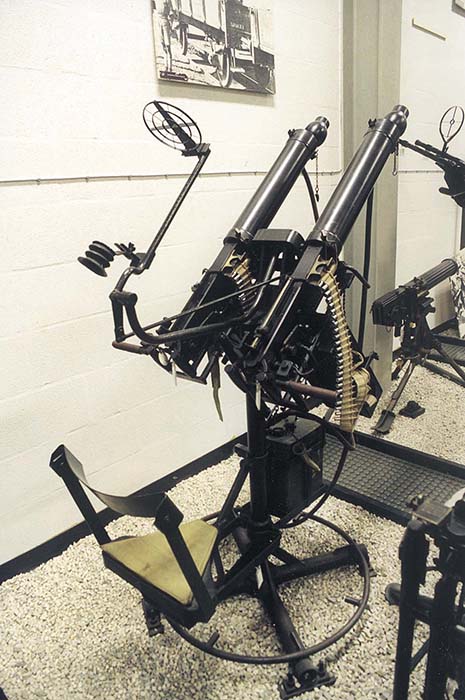
In the later years, Herb frequently traveled abroad in his quest for new items. He had access to most places all over the world: it is said that there was scarcely a place that had not been “pilfered” by him for the R.S.A.F. collection. As an example of his meticulousness, while in the U.S.A. at a machine gun shoot, he sorted through 2500 Russian Maxim ammunition boxes, looking at the markings on the cloth belts. He was triumphant at the end with 12 fresh examples he had not seen before. What fun!! Wherever Herb traveled around the world there was always a house and bed for him to stay, guns to be inspected, magazines and belts to be appraised, ammunition to be discovered and friends revisited. Herb, with his dry Irish wit, was always a pleasure to spend time with. He had an incredible memory and encyclopedic knowledge on a vast range of subjects, much to the chagrin of other contestants on pub quiz nights. Most of all, he was a true friend to a large amount of people. Those who knew him were enriched by his company, his friendship and his willingness to share his knowledge. He will be sorely missed by all.
Written in fond memory by Herb’s friend, Martin Golland
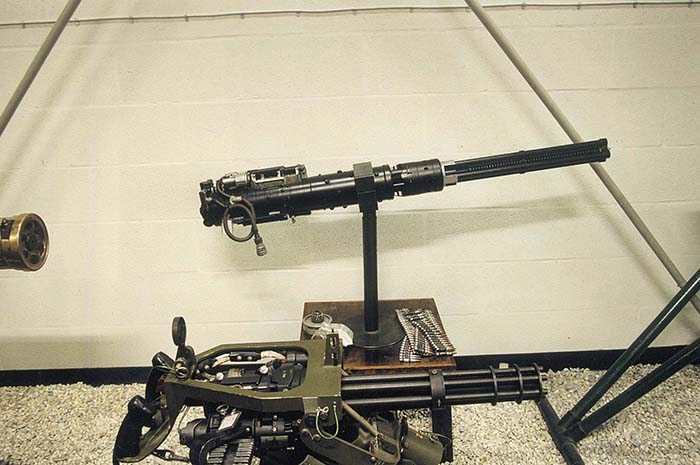
The early days of Herb Woodend and the Rise of the Pattern Room
When Herb Woodend was born on April 28, 1943, the Second World War was still raging at its most furious high. Many years later, Herb would be reluctant to talk about his exact background for reasons of British politics. He was born in Northern Ireland in what he referred to as “the noisy part”. Herb’s uncle was in the military or in the police, and Herb cut his teeth on Bren guns and Sten guns at an early age. He would also play with his uncle’s service revolver, and on one occasion he caught some trouble for leaving the revolver cocked & loaded in the holster, something that was not discovered until some time later. Upon discovering that he had walked around with the revolver in this unsafe condition, the uncle was of course furious at young Herbert.
Besides firearms, American popular music of the 50’s and Country Music were among Herb’s fancies while growing up. One anecdote involves Herb signing up for guitar lessons from a local in the village, only to discover at the first lesson that it was Hawaiian steel guitar he had signed up for, and not the acoustic guitar of his hero Elvis Presley.
As happened with many youngsters, Herb and a girl from what he later called “the other tribe” fell in love, which was not a popular thing in the politically contested part of Northern Ireland they grew up in. To avoid punishment, they fled to London and began looking for work. At this point, Herb was a big small arms buff and he read everything available about the development of military arms. He also took the occasional trip to the Enfield rifle factory in Northern London to “hang out and see the sites”, as he said. In conversation with one of the guards, he learned one Sunday that there were finally some job openings and that there would be interviews for them the following Monday. Herb showed up and in the interview, he corrected the official on some technical detail, which he believed is what landed him the job. The detail in question was the correct caliber of the Carl Gustaf Swedish anti tank recoilless cannon. 84mm, of course.
To work at the rifle factory was nice, but “shuffling papers” was a job that quickly became boring for Herb. He found some comfort in discovering the “Pattern Room”, which was held at the Enfield Rifle factory. At this time (mid 1960’s) the Pattern Room held about 3,000 guns and it was manned by two elderly gentlemen and a secretary. The two men were not really interested in aquiring pieces for the collection, and only added into it what was brought to them by the official channels, ie; the British Army and the rifle factory itself. To fill their day, they repaired lawn movers and similar equipment for the locals.
Not long after Herb started working at Enfield, one of the gentlemen of the Pattern Room either retired or died, and Herb was more than happy to take over the position. Shortly thereafter, the other gentleman left Enfield as well, and Herb was a young curator in charge of what was to become his life’s accomplishment.
When Herb retired, the collection had grown to 13,000 guns and was housed in a purpose built building at the Royal Ordnance factory in Nottingham. Herb administered the Pattern Room collection and traded, bought and aquired as gifts the majority of the items that were added to the collection in the approximately 35 years he worked there. Dolf Goldsmith recalls that Herb flew to Hong Kong on a military flight to pick up a rare machine gun once, stayed a couple days and flew back to England with the new aqusition. Most gun collectors would love to have that kind of adventure for their hunting trips!
The decision to bring the collection to Leeds to be part of the Royal Armouries was a heavy blow to Herb, and those of us who knew him well could see that he was hurt deeply by the fact that he had to retire and leave the collection at the same time as it was being moved further away from him.
Although he never wrote his own book, Herb’s name is included in the acknowledgement pages of most modern firearms books and his contributions have been not only the information he has passed out, but also the fact that he knew every major source of information, as well as most of the minor ones, and he could point the researchers in the correct direction for what they were seeking.
Written by Herb’s friend Folke Myrvang
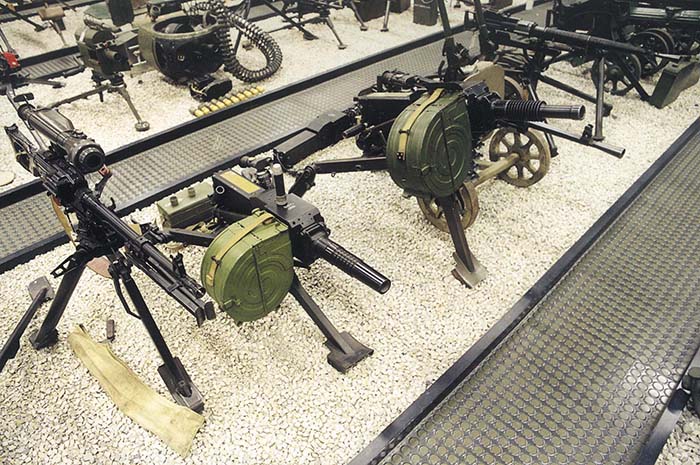
MOD Pattern Room Moves to Royal Armouries at Leeds
By Dan Shea
The industrial city of Leeds is in The North of England. Fly into Manchester and drive over, or go anti clockwise on the London Orbital (M25) from Heathrow or Gatwick, then go north on the M1 for about two hours. Or five hours, depending on traffic.
SAR has a special planned on the Royal Armouries at Leeds collection, so I won’t go into too much detail here. Suffice it to say that the living history, the jousts, the gunsmithing shop, and the four wonderful levels of the museum are a major tourist attraction, that never fails to fill a day’s visit.
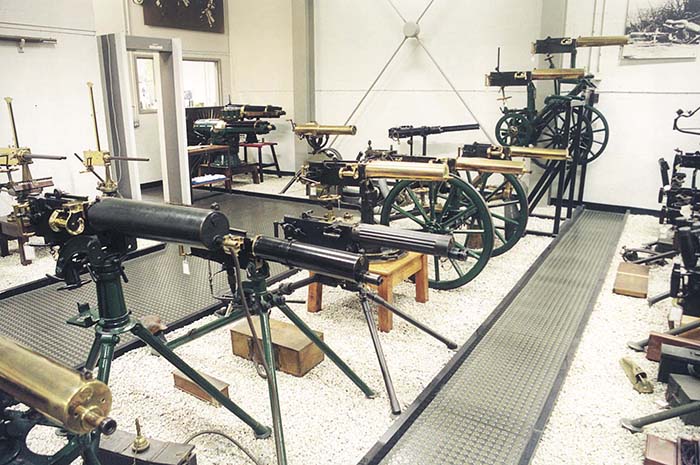
An added bonus to visiting the Royal Armouries is the current location on-site of the MOD Pattern Room which relocated at short notice from Nottingham to Leeds in 2001. Currently in temporary accommodation the Pattern Room collection will be gifted to the Royal Armouries on completion of a new facility (expected by mid-’05). Together the 2 supported by the Pattern Room library in the form of the Small Arms Technical Information Centre (SATIC) The SATIC librarian can be contacted on www.robert.sharrock@armouries.org.uk
Now that the Gatlings, Maxims, Diggers, Nordenfelts etc, have been placed on display in the Armouries, it is easy for the casual visitor to gain access and see them. You can walk around one gallery and see Hiram Maxim’s “Forerunner”, and Enfield Number 1. If you have a visit to the UK planned, you should make it a point to go to Leeds. You can get more information on the facility there, and the other locations including Fort Nelson at the website: http://www.armouries.org.uk/
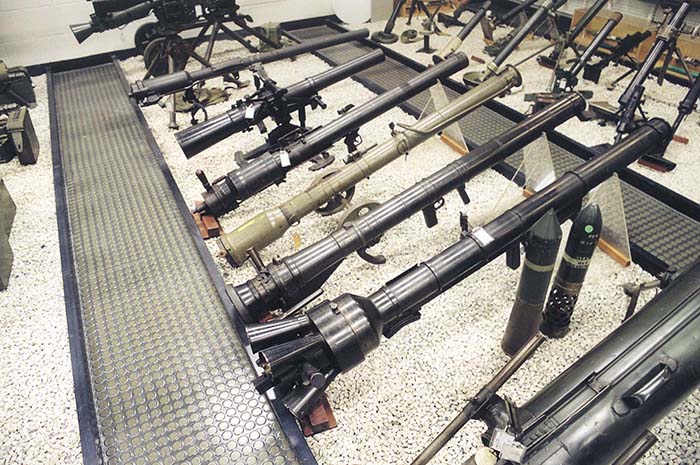
Richard Jones was the Assistant Custodian of the MOD Pattern Room for seven years. With the move to Leeds and the retirement of Herb Woodend, Richard was chosen for the job of Custodian. He brings many, many years of experience with small arms to the job, and an incredible amount of knowledge as well. Richard’s specialties are in the more modern arms, and he is able to piece together the stories of the Kalashnikovs, the FALs, and the PKMs as well as many others. His technical analysis of firearms has proved invaluable to many agencies and researchers around the world, and he has devoted much of his time to the furthering of the MOD Pattern Room collection, scoring many interesting additions.
Richard has been a resource to many authors, and is in the process of writing some articles for Small Arms Review, in particular a section on the PKM machine guns. He can be contacted by government agencies in need of forensic information, and qualified researchers who may request information or a visit to the MOD Pattern Room Collection.
Richard D Jones
Custodian
MOD Pattern Room
richard.jones@armouries.org.uk
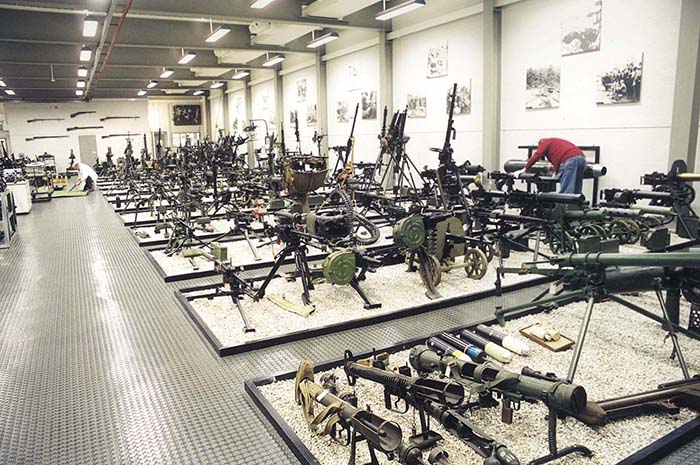
Royal Armouries in the United States?
Yes. Through a joint venture, the Armouries will be putting some exhibits into Louisville Kentucky with the new Owsley Brown Frazier Historical Arms Museum. This new museum is set to open in May of 2004. We will bring more information on this to you as we get it. It will be located at the Doerhoefer Building, 831 W. Main St, Louisville, KY, which is the corner of Ninth and Main streets in downtown Louisville. Their website is at: http://www.frazierarmsmuseum.org

Moving there to be close to the collection?
There has been quite a bit of discussion regarding the Clarence Dock project in Leeds. This project virtually surrounds the five level Royal Armouries museum, and in fact, some of the new project will include the new MOD Pattern Room at an undisclosed, high security location. Many interested small arms students have mentioned purchasing a condo style unit there, to be close to studying. With that in mind, here is the relevant information to start you on your quest. Phase one is already sold out, so it seems to be a very popular location. There will be 600 “Luxury Apartments” which are like Condos in the US- you own it, 500,000 square feet of leisure area, and 200,000 square feet of commercial space. All enquiries regarding the Clarence Dock project should be directed to (From US) 011-44- (0)113 244 4455 Website : www.clarencedock.com

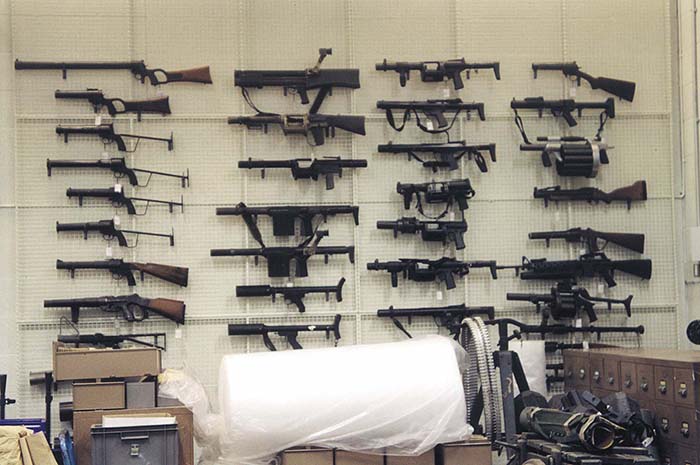

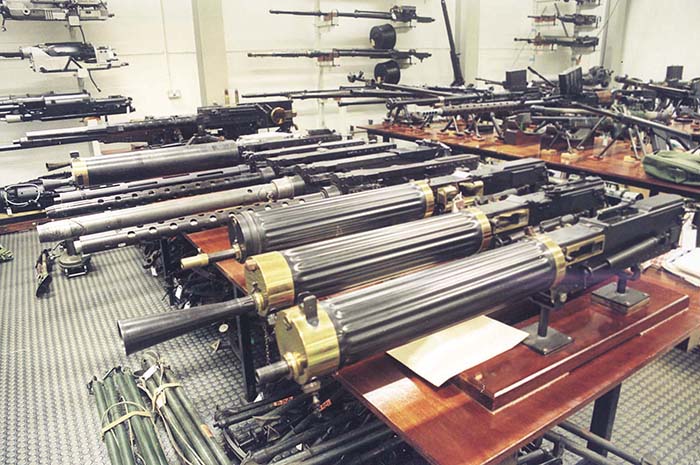
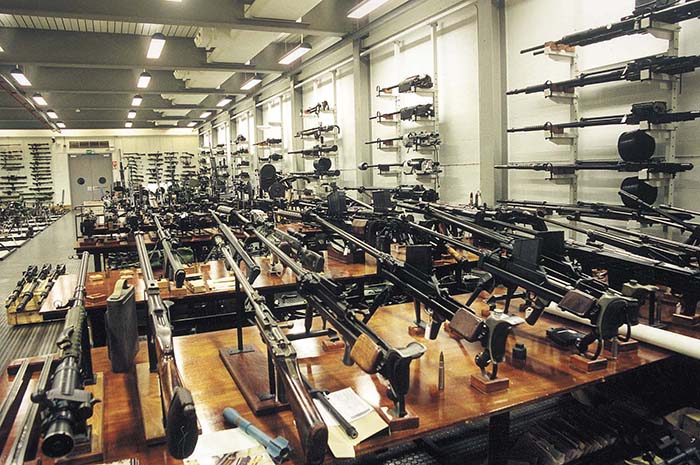
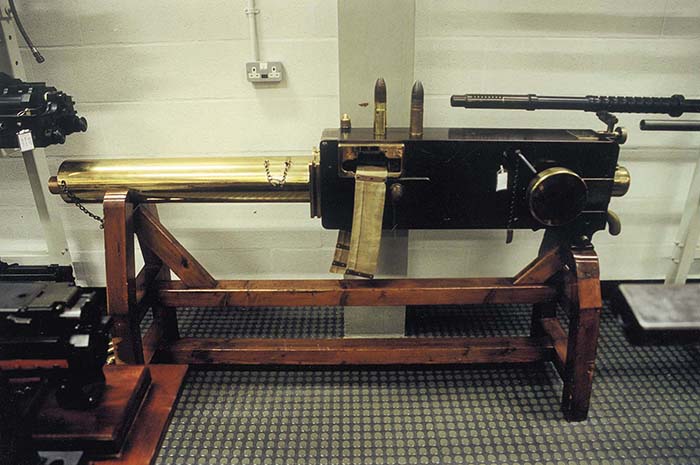
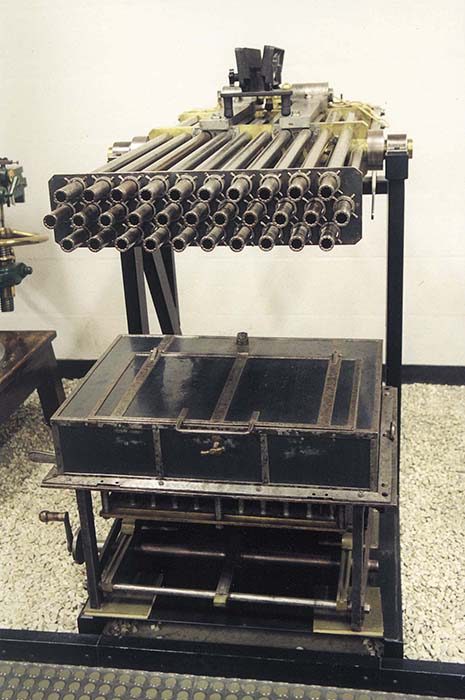
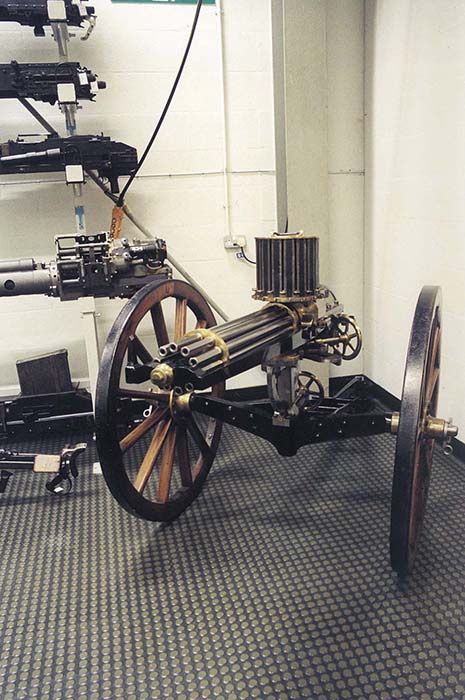
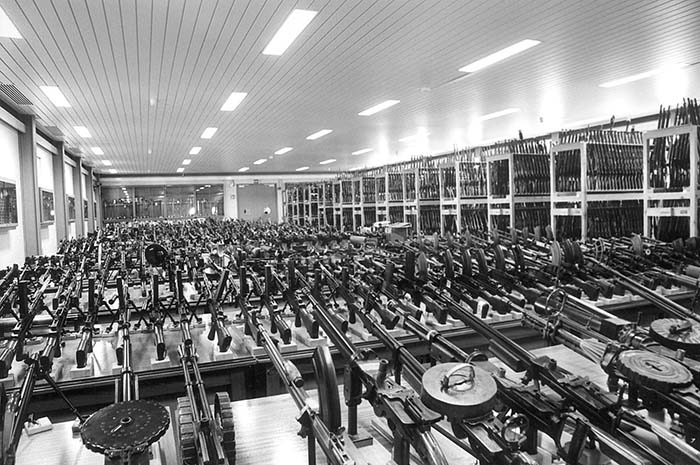
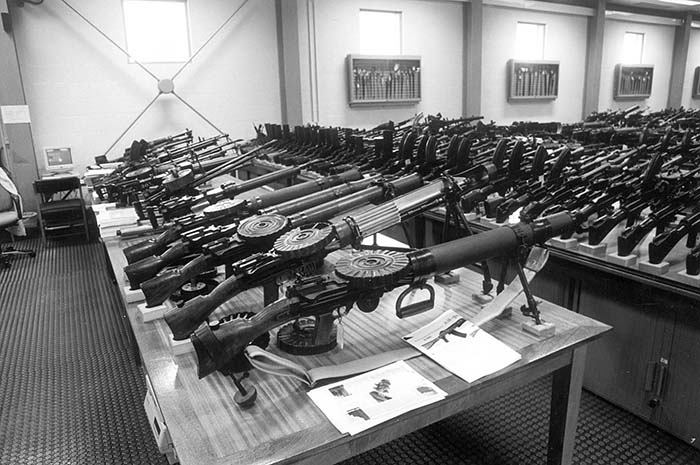
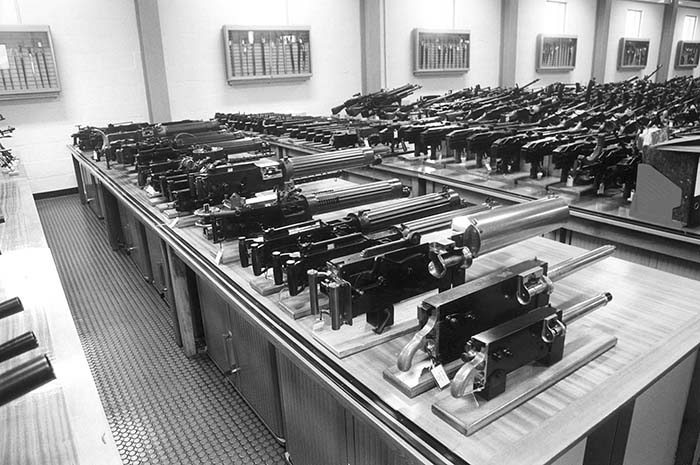
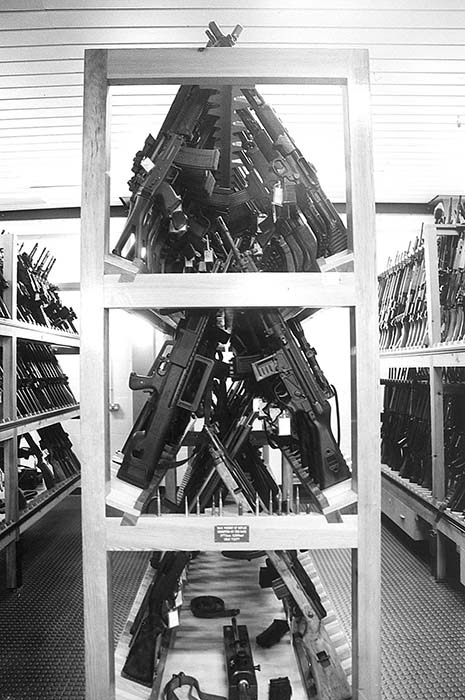
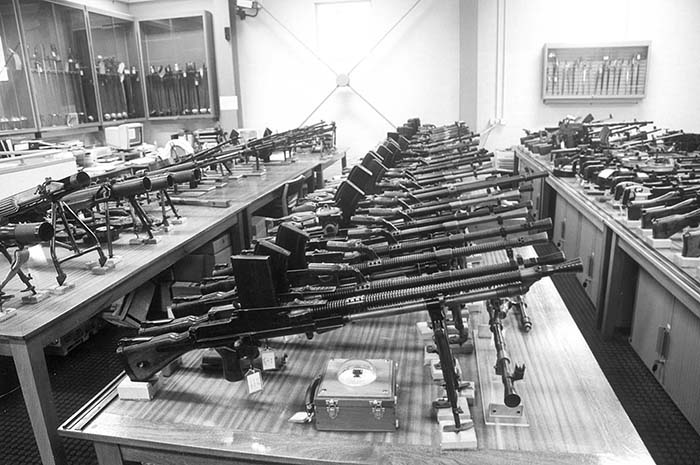
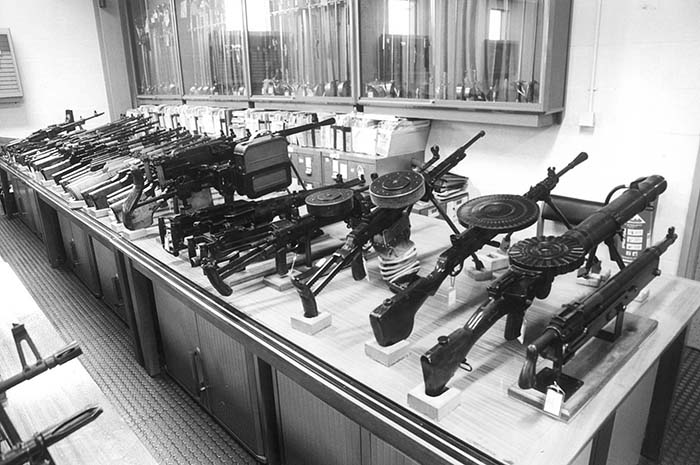
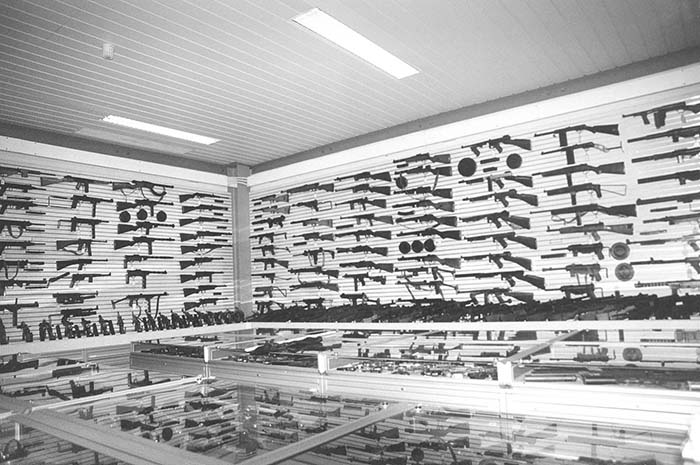
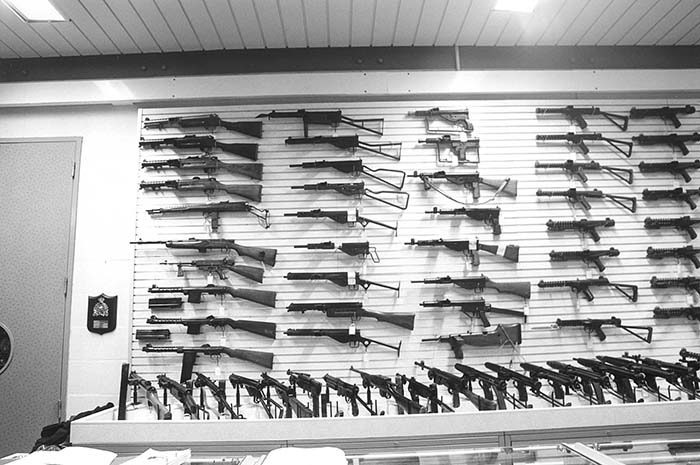
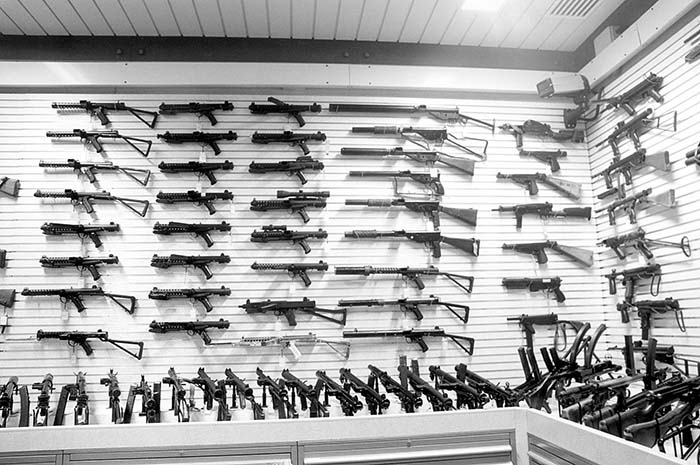
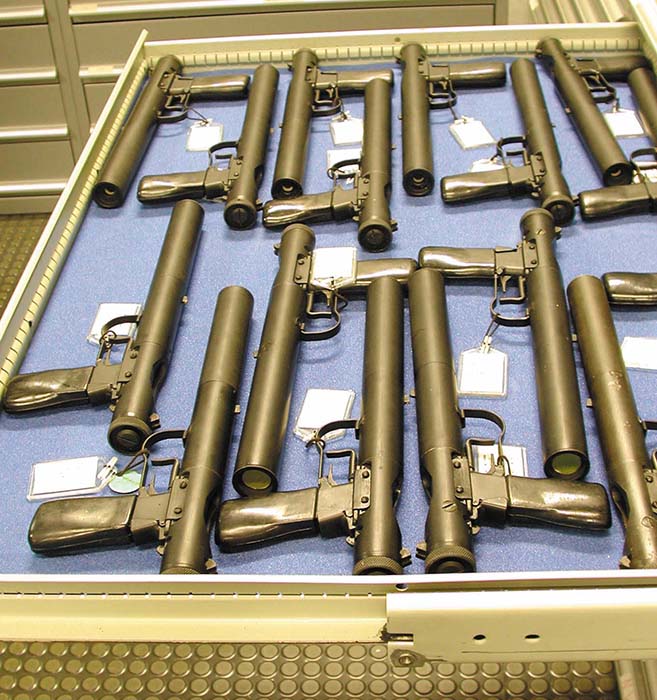
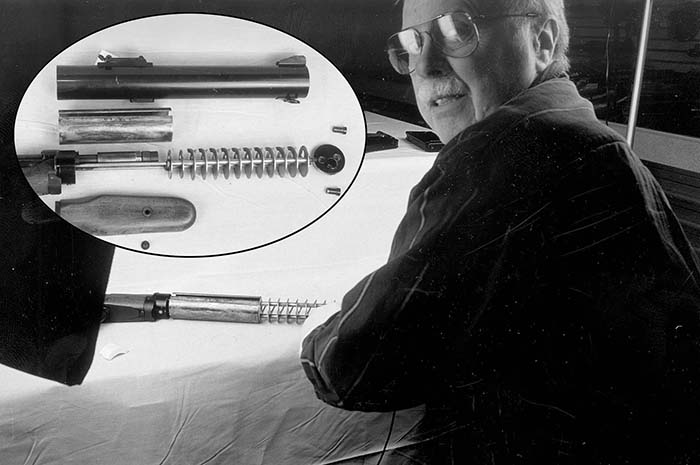
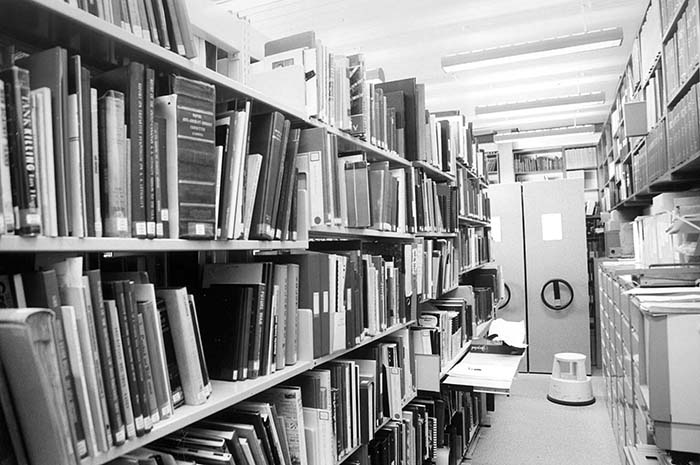

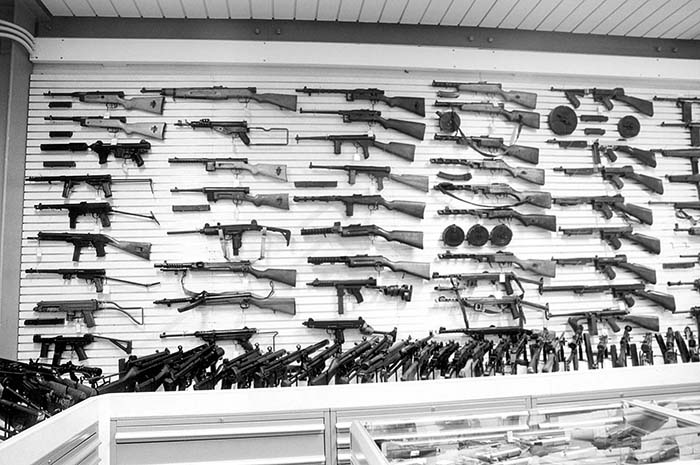
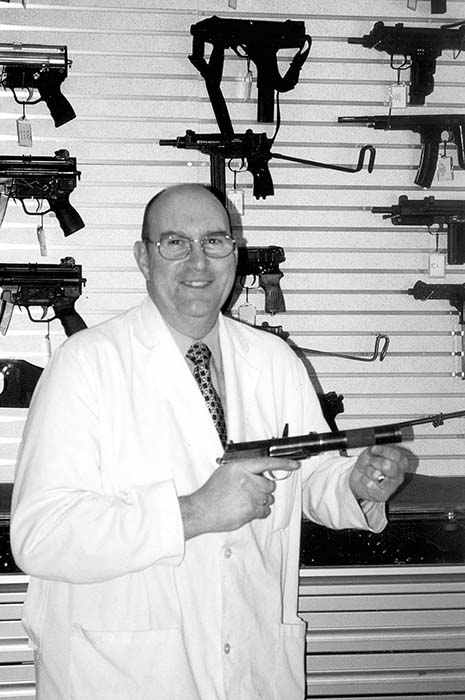
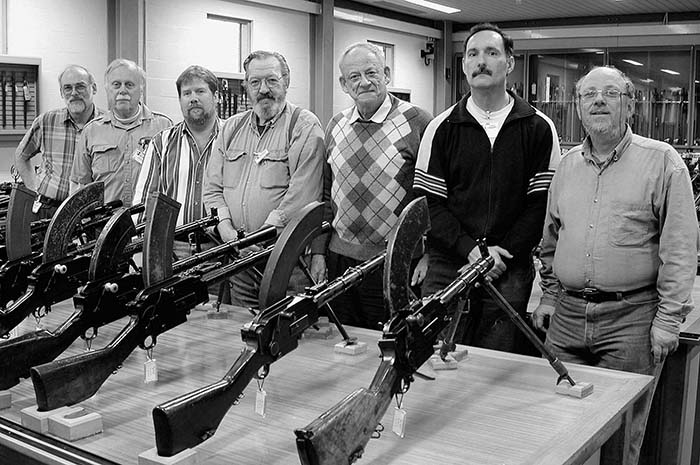
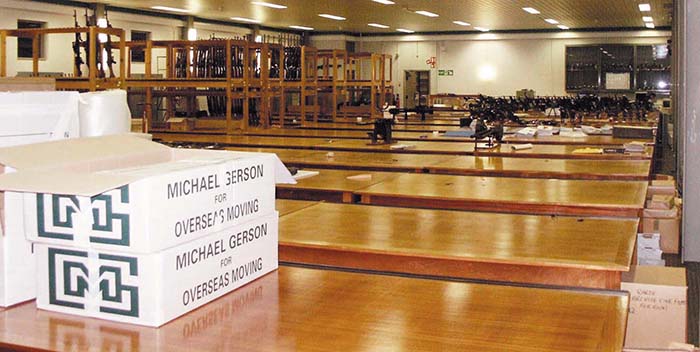

| This article first appeared in Small Arms Review V7N3 (December 2003) |



